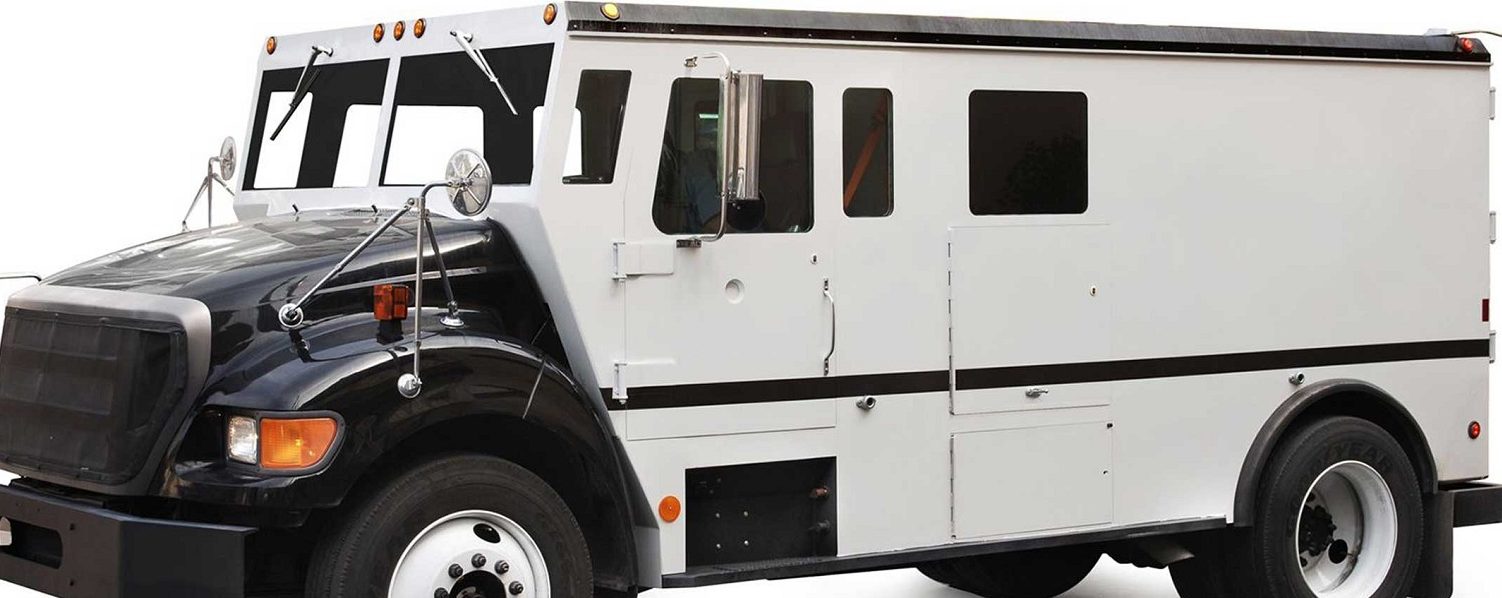
In recent years, the use of armored vehicles for the transportation of cash and other valuable items has become increasingly prevalent, due to the heightened security risks involved in such operations. However, there remains a lack of clarity in the insurance industry regarding what constitutes an “armored vehicle,” leading to disputes between insurers and clients over coverage. This issue is particularly important given the significant financial risks involved in the transportation of high-value goods.
The purpose of this article is to explore the need for a universal definition of armored vehicles within insurance policies, and to discuss the potential benefits of such a definition. The article will begin by providing an overview of the current issue at hand, including the challenges faced by insurers and clients in defining armored vehicles. It will then examine the different categories of armored vehicles, their specifications, and the risks associated with each category. Finally, the article will conclude by discussing the potential benefits of a universal definition of armored vehicles within insurance policies, including increased clarity for both insurers and clients, improved risk management, and reduced disputes over coverage.
Background
The use of armored vehicles in the transportation of cash and precious minerals has become increasingly popular due to the heightened security risks associated with such operations. As a result, insurance policies have been developed to cover the risks associated with the use of these vehicles. However, there has been a lack of clarity in the definition of an armored vehicle within the policy wordings, leading to disputes between insurers and claimants.
One such issue involves a policy warranty that requires the conveying vessel to be an armored vehicle in a roadworthy condition and designed for carrying cash and precious minerals. The insured is required to use armored vehicles for all transits. However, there is no universally accepted definition or description of an armored vehicle, leading to confusion and uncertainty regarding what vehicles qualify as armored vehicles under the policy.
It is important to note that armored vehicles come in different categories, each with its own set of specifications and purposes. The different categories include:
- Light armored vehicles – these are typically designed for military use and can carry small arms fire protection.
- Armored personnel carriers – these vehicles are designed to transport personnel and are often used by law enforcement agencies.
- Cash-in-transit vehicles – these are vehicles designed specifically for the transportation of cash and other valuables.
- Bulletproof cars – these are cars with reinforced body panels and bulletproof glass designed to protect the occupants from small arms fire.
The lack of a clear definition of armored vehicles within insurance policy wordings has led to disputes between insurers and policyholders, with each party interpreting the term differently. This has resulted in delays in claims processing and has left policyholders uncertain of their coverage in the event of a loss.
In the next section of this article, we will explore the different categories of armored vehicles in more detail, providing specifications and use cases for each category. This will serve as a guide for insurers and policyholders in determining what vehicles qualify as armored vehicles under their policy wordings.
Importance of Defining Armored Vehicles in Insurance Policies
Risks Associated with the Use of Armored Vehicles
Armored vehicles are typically used to transport valuable goods such as cash, precious metals, and high-value commodities. These vehicles are highly targeted by criminals due to the perceived value of their contents, and the use of force during attempted robberies is not uncommon. In addition to the obvious financial loss that can occur during a robbery, there is also a risk of injury or loss of life to the driver, passengers, and innocent bystanders.
According to a report by the Insurance Information Institute, armored car companies experience an average of 4.5 robberies per year per 100 vehicles, with an average loss per robbery of $154,719. In addition, there is the risk of accidental damage or loss due to traffic accidents or other unforeseen events.
Several high-profile cases have highlighted the importance of understanding the risks associated with insuring armored vehicles:
In 2013, a CIT (cash-in-transit) van hijacking in South Africa was a high-profile incident that received significant media attention. The van was reportedly transporting approximately R70 million (equivalent to around $6 million at the time) in cash when it was hijacked. The perpetrators used explosives to gain access to the van and made off with the money.
This case demonstrates the importance of understanding the risks associated with vehicles used for transporting cash and valuables.
It is important for insurance policies to clearly define what is considered an armored vehicle and the specific risks associated with their use. This will help insurers accurately assess the level of risk involved and provide appropriate coverage for the insured.
Need for Clarity in Insurance Policies
The lack of clear definitions of armored vehicles in insurance policies can create uncertainty and disputes when claims arise. This is evident in the cases of SBV Services vs. Compass Insurance. (2013) and the Hamilton et al. v. United States (2017).
The SBV Services vs. Compass Insurance. (2013) involved the South African company SBV Services, which provided cash-in-transit services. SBV had purchased several vehicles that had been retrofitted with armor to protect against attacks during transit. In 2010, one of these vehicles was involved in an accident that caused significant damage to the vehicle’s armor.
SBV submitted a claim to its insurer, Compass Insurance, for the cost of repairs. However, Compass denied the claim on the basis that the vehicles did not meet the definition of an armored vehicle as stated in the policy. Compass argued that the policy only covered vehicles that were originally designed and manufactured as armored vehicles and did not cover retrofitted vehicles.
SBV disputed this interpretation of the policy and took Compass to court. In 2013, the judge ruled in favor of SBV, stating that the retrofitted vehicles did meet the definition of an armored vehicle as they had been designed and modified specifically for use in CIT operations. The judge ordered Compass to pay the claim for damages to the vehicle.
The case highlights the need for insurance policies to have clear and specific definitions of armored vehicles to avoid ambiguity and disputes over coverage The ruling in this case also provides some guidance for how the term “armored vehicle” should be defined, particularly in the context of CIT operations. This case also serves as an example of the risks associated with the use of armored vehicles and the importance of insurance coverage for such risks.
In the case of Hamilton et al. v. United States (2017), the plaintiffs, who were civilian contractors working in Iraq, filed a claim for damages to their armored vehicles during a rocket attack. The insurance policy provided coverage for “physical damage to insured property caused by an act of war,” but the insurer denied the claim, stating that the vehicles were not “armored vehicles” as defined by the policy.
The plaintiffs argued that the vehicles met the common understanding of the term “armored vehicles,” but the lack of a clear definition in the policy wording made it difficult to determine coverage. The court ultimately ruled in favor of the plaintiffs, stating that the insurer had a duty to define “armored vehicles” in the policy and that the common understanding of the term should be used to determine coverage.
This case also underscores the importance of having a clear definition of armored vehicles in insurance policies to avoid confusion and disputes over coverage.
Definition of Armored Vehicles
Armored vehicles are designed to protect their occupants and cargo from attack or other threats. However, there is no universally accepted definition of armored vehicles, and different countries may have different standards and regulations. Here, we provide an overview of some international definitions and standards, as well as a categorization of armored vehicles and their specifications.
International Definitions and Standards
The International Organization for Standardization (ISO) has developed a standard for armored vehicles, known as ISO 9001:2015 Quality management systems – Requirements. This standard outlines the requirements for the design, testing, and certification of materials used in ballistic protection applications, including armor plating and bullet-resistant glass. ISO has also developed a separate standard for security-related vehicles, including armored vehicles, called ISO 16674:2017 Road vehicles – Security test methods for vehicle resistance against theft and robbery. This standard outlines the test methods for evaluating the resistance of a vehicle to forced entry, theft, and robbery, as well as its overall security performance.
In addition, the National Institute of Justice (NIJ) in the United States has developed a set of standards for ballistic resistance in armored vehicles. These standards are divided into different levels, ranging from Level I for low-level protection to Level IV for high-level protection against armor-piercing rounds.
Overall, the use of internationally recognized standards and specifications for armored vehicles can help to provide a clear definition of what constitutes an armored vehicle, as well as ensuring that these vehicles are designed and manufactured to specific safety and security standards.
Categorization of Armored Vehicles
Armored vehicles can be categorized based on their level of protection, mobility, and intended use. The level of protection is typically based on the vehicle’s ability to withstand various forms of attack, including ballistic threats and improvised explosive devices (IEDs). Mobility refers to the vehicle’s ability to move quickly and effectively in different terrain types, while intended use can include transport of personnel, cash, or high-value cargo.
One common categorization system for armored vehicles is based on the level of ballistic protection they provide. This system is often denoted by a numerical rating, such as the NATO STANAG 4569 standard or the UL 752 standard in the United States. The ratings generally range from Level 1, which provides protection against small arms fire, up to Level 4 or 5, which can withstand high-powered rifle rounds and explosive blasts.
Another way to categorize armored vehicles is by their intended use. For example, a cash-in-transit (CIT) vehicle would be designed to transport cash and other valuables between locations and would typically have a high level of protection against theft and robbery. On the other hand, a military vehicle designed for combat operations would prioritize mobility and protection against ballistic and explosive threats.
Finally, armored vehicles can also be categorized based on their mobility. Some vehicles, such as tanks and armored personnel carriers (APCs), are designed for use on rough terrain and can traverse difficult terrain types. Others, such as CIT vehicles, may be designed for use primarily on roads and highways.
In conclusion, it is important for insurers to understand the different categories of armored vehicles in order to properly assess risk and develop appropriate policy language. By clearly defining the type of armored vehicle being insured and the specific risks associated with its use, insurers can better protect themselves and their clients against financial loss in the event of an incident.

By Jasper Mandizvidza
